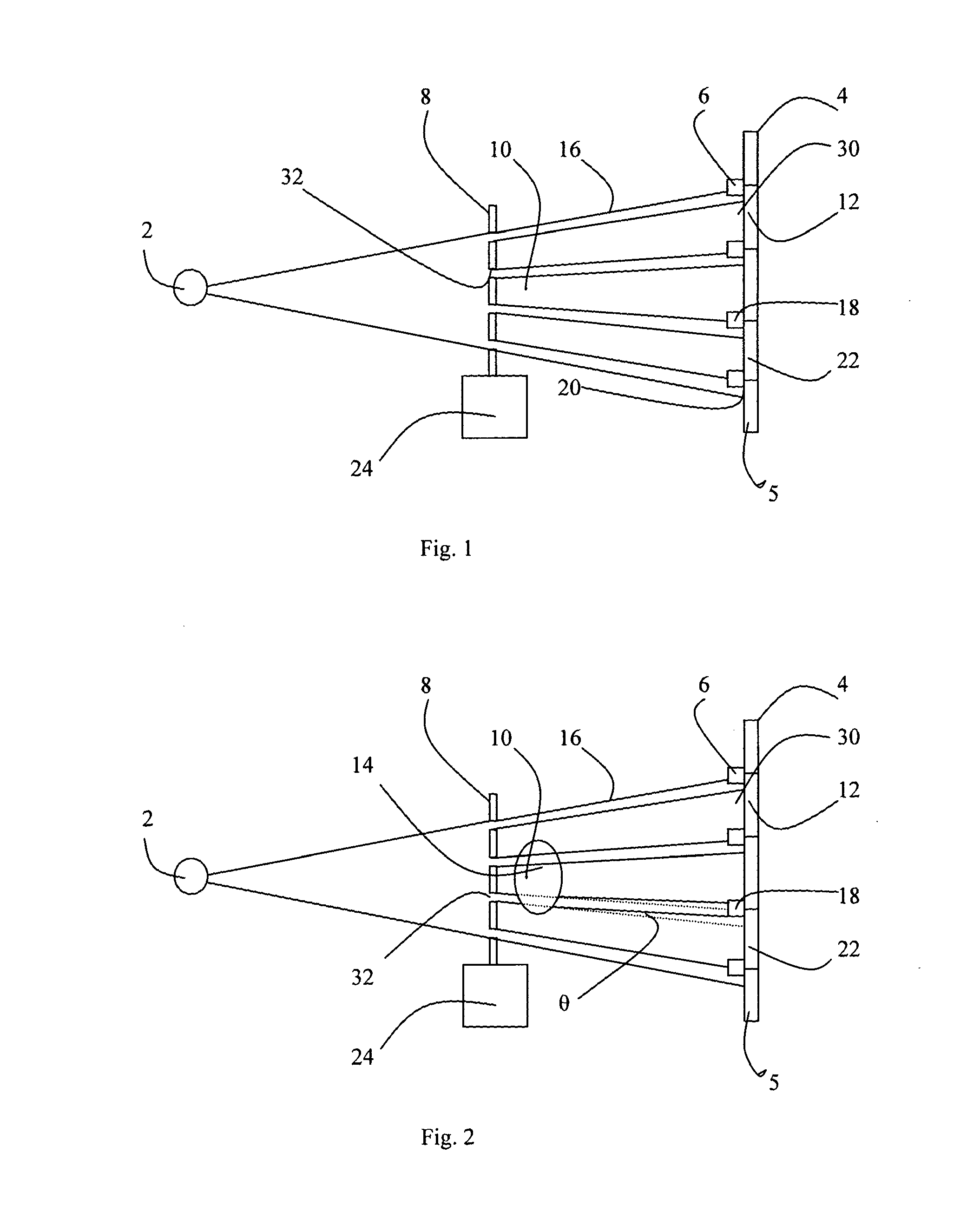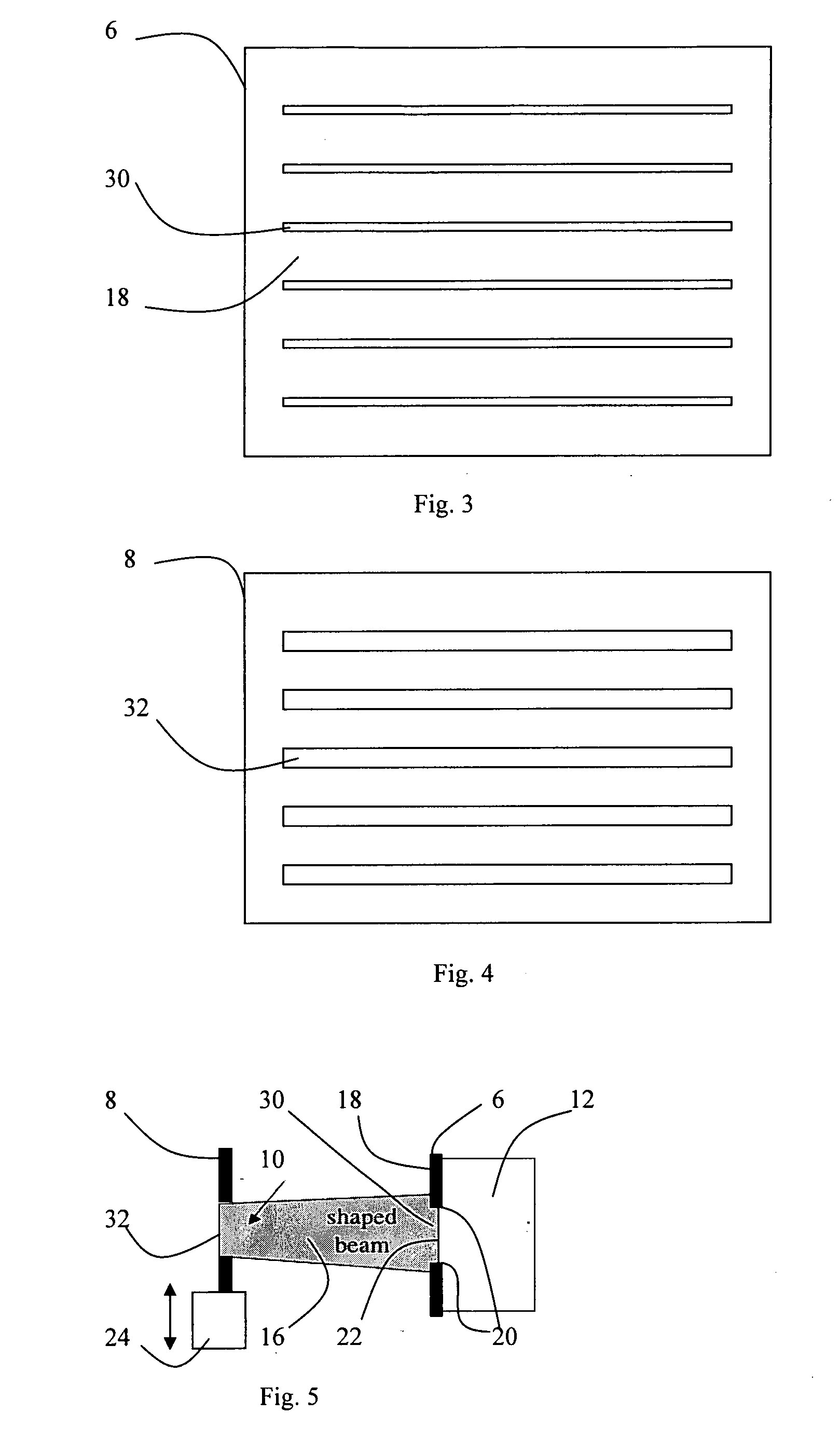Phase contrast imaging
a phase contrast and xray image technology, applied in the direction of material analysis, instruments, applications, etc., can solve the problem of uncollimated radiation, and achieve the effect of improving sensitivity or reducing deflection
- Summary
- Abstract
- Description
- Claims
- Application Information
AI Technical Summary
Benefits of technology
Problems solved by technology
Method used
Image
Examples
Embodiment Construction
[0049]Referring to FIG. 1, the system according to the first embodiment of the invention consists of an x-ray source 2, an x-ray detector 4 and a sample mask 8 placed immediately before the sample region 10. The x-ray source is not a synchrotron source, which would be inherently collimated and monochromatic, instead it is a conventional commercial source. For example, the source may be a molybdenum target source; many other commercial sources are available. Such sources are not in general monochromatic, instead although such sources frequently have a dominant energy they in fact emit small amounts of energy at other frequencies, and in this sense are polychromatic. Thus, in this specification, “polychromatic” is not intended to require a broad spectrum of frequencies. Further, such commercial sources are also not inherently collimated in the way that synchrotron sources are, instead X-rays are emitted in a range of angles; thus the emitted X-rays are both divergent and uncollimated....
PUM
 Login to View More
Login to View More Abstract
Description
Claims
Application Information
 Login to View More
Login to View More - R&D
- Intellectual Property
- Life Sciences
- Materials
- Tech Scout
- Unparalleled Data Quality
- Higher Quality Content
- 60% Fewer Hallucinations
Browse by: Latest US Patents, China's latest patents, Technical Efficacy Thesaurus, Application Domain, Technology Topic, Popular Technical Reports.
© 2025 PatSnap. All rights reserved.Legal|Privacy policy|Modern Slavery Act Transparency Statement|Sitemap|About US| Contact US: help@patsnap.com



